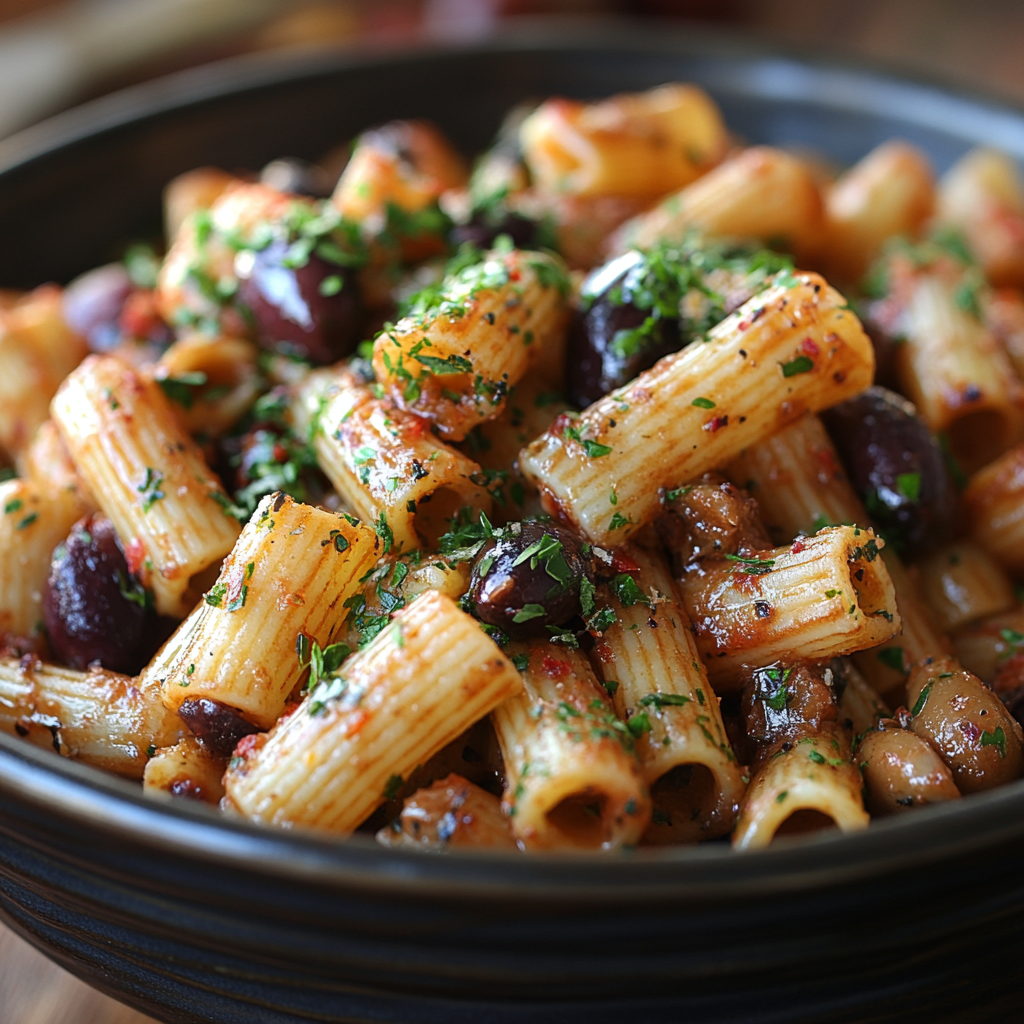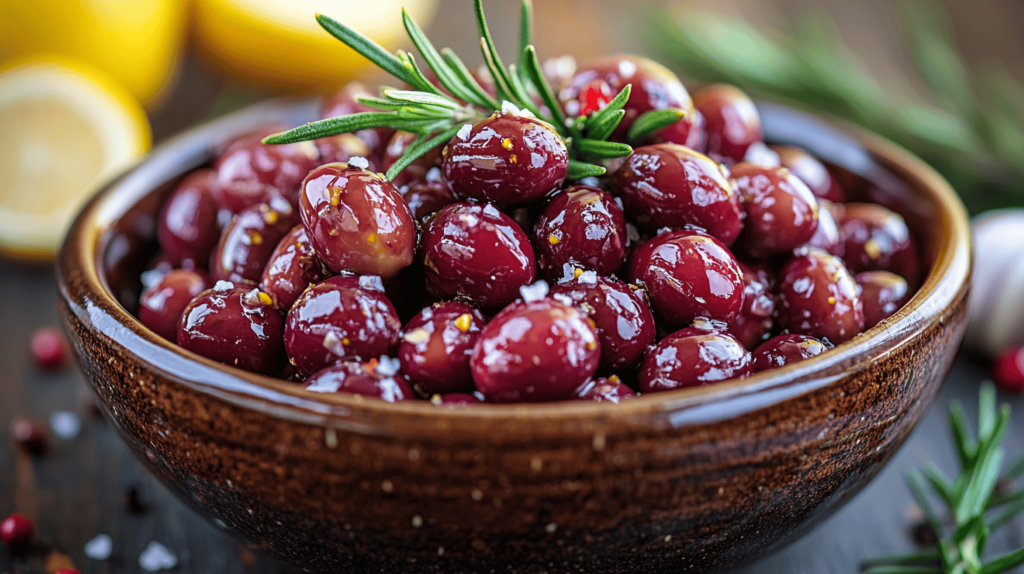Welcome to the world of Kalamata olives, the Mediterranean jewels that bring rich flavors, vibrant colors, and nutritional benefits to your table. Whether you’re an olive enthusiast or someone curious about incorporating them into your meals, this guide will walk you through everything you need to know, including a delightful recipe to try at home.
Table of Contents
What Are Kalamata Olives? 🫒✨
Kalamata olives are not your average olives. These dark purple, almond-shaped gems hail from Kalamata, a city in southern Greece. They have a firm, meaty texture and a tangy, slightly fruity flavor that sets them apart from other varieties. Whether brined, marinated, or paired with cheese, these olives add a burst of flavor to any dish.
Fun Fact: 🫒 are protected by a PDO label (Protected Designation of Origin), which means they must be grown in specific regions of Greece to earn the name.
Why Are 🫒 So Special? 🌟
- Rich Nutritional Profile: Packed with heart-healthy monounsaturated fats, vitamin E, and antioxidants, Kalamata olives are as good for your health as they are for your taste buds.
- Culinary Versatility: From salads to sauces, Kalamata olives can elevate almost any dish.
- Long Shelf Life: Properly brined, they can stay fresh for months, making them a pantry staple.
The Journey of 🫒 🌳
From Grove to Table
Kalamata olives are grown on ancient trees, often in sun-soaked Greek orchards. Harvesting is typically done by hand to avoid damaging the fruit. Once picked, they’re cured and brined for weeks to remove bitterness and enhance their flavor. Traditional curing methods include vinegar or salt brine, which give them their signature tang.
Common Problems and How to Solve Them 🔧
Problem 1: Are Your Olives Too Salty?
Rinse them in cold water before use to reduce the brininess.
Problem 2: Storing Them Properly
Keep your Kalamata olives submerged in brine in an airtight container in the fridge to extend their freshness.
Cooking with Kalamata Olives 🍳
🫒 shine in the kitchen. Their bold flavor complements a wide range of dishes, from simple appetizers to elaborate entrees. Let’s try a quick and delicious recipe to get you started!
Mediterranean Kalamata Olive Pasta 🍝🫒

Ingredients:
- 300g of spaghetti or linguine
- 1 cup Kalamata olives, pitted and halved
- 2 tbsp olive oil
- 3 cloves garlic, minced 🧄
- 1 cup cherry tomatoes, halved 🍅
- 1 tsp dried oregano 🌿
- ½ tsp crushed red pepper flakes (optional)
- Salt and black pepper, to taste
- Fresh parsley and grated Parmesan cheese for garnish 🧀
Instructions:
- Cook the pasta: Bring a large pot of salted water to a boil. Cook the spaghetti until al dente, then drain and set aside.
- Prepare the sauce: Heat olive oil in a large pan over medium heat. Add minced garlic and sauté until fragrant. Toss in the cherry tomatoes and cook until softened.
- Add the olives: Stir in the 🫒, oregano, and crushed red pepper flakes. Cook for 3–5 minutes.
- Combine: Add the cooked pasta to the pan and toss everything together. Season with salt and pepper to taste.
- Serve: Garnish with fresh parsley and grated Parmesan cheese. Serve warm and enjoy the Mediterranean flavors!
Tip: Add a handful of baby spinach or arugula for an extra touch of freshness.
Kalamata Olives in Global Cuisine 🌍🫒
- Greek Salads: A staple ingredient, alongside feta cheese, cucumber, and tomatoes.
- Italian Pizzas: Sprinkle 🫒 on your pizza for a savory kick.
- Middle Eastern Mezze: Serve with hummus, baba ganoush, and warm pita bread for a delicious platter.
Buying and Storing Tips 🛒
How to Choose the Best:
- Look for deep purple color and a shiny appearance.
- Choose jars with the PDO label for authenticity.
Storing Them Properly:
- Keep them in their brine in a sealed container in the fridge.
- Use within a few weeks once opened.
Why You Should Embrace Kalamata Olives 🌟
Kalamata olives aren’t just a food—they’re an experience. Whether you’re enjoying them on their own, adding them to recipes, or discovering their history, these olives bring a touch of Mediterranean sunshine to your life.
FAQs 🫒❓

Got questions about Kalamata olives? You’re not alone! Here are some common questions and answers to help you master all things olives.
Q1: What makes Kalamata olives different from other olives?
A: Kalamata olives are known for their dark purple color, almond shape, and meaty texture. Unlike green or black olives, they have a tangy, slightly fruity flavor with a hint of bitterness, thanks to their unique curing process.
Q2: Are 🫒 healthy?
A: Absolutely! They’re rich in healthy monounsaturated fats, antioxidants, and vitamin E. These nutrients support heart health, reduce inflammation, and contribute to overall well-being.
Pro Tip: Kalamata olives are a great addition to Mediterranean diets, which are linked to longer lifespans and lower rates of chronic disease. 🌿
Q3: Can you eat them straight from the jar?
A: Yes, you can! They’re fully cured and ready to eat. However, if they’re too salty for your taste, you can rinse them in water or soak them for a few minutes to mellow the flavor.
Q4: Are Kalamata olives vegan and gluten-free?
A: Yes, Kalamata olives are both vegan and gluten-free, making them a versatile option for almost any diet. They’re also free of artificial additives when purchased in their natural brine.
Q5: How long do Kalamata olives last after opening?
A: Once opened, Kalamata olives can last up to 2–3 weeks in the fridge if kept submerged in their brine and stored in an airtight container.
Q6: Can I freeze Kalamata olives?
A: Freezing olives isn’t recommended, as it can affect their texture and flavor. Stick to storing them in their brine for optimal freshness.
Q7: Are Kalamata olives good for cooking?
A: Definitely! Kalamata olives are versatile and add a punch of flavor to pasta, pizzas, salads, and even bread. Check out the Mediterranean Kalamata Olive Pasta recipe above for inspiration! 🍝
Q8: What should I do if my Kalamata olives have white spots?
A: White spots or a cloudy brine can occur naturally due to harmless lactic acid fermentation. It’s safe to eat as long as the olives don’t smell or taste off.
Q9: Do Kalamata olives contain pits?
A: Many Kalamata olives are sold with their pits intact to preserve flavor. However, pitted versions are available for convenience. Always check the label before buying!
Q10: Are Kalamata olives safe for children?
A: Yes, they’re safe and can be a healthy snack for kids. However, ensure you remove the pits before serving to avoid choking hazards.
Q11: Why are Kalamata olives expensive?
A: Kalamata olives are handpicked and cured using traditional methods, which makes them labor-intensive to produce. Their PDO certification also ensures premium quality, which can add to the cost.
Q12: Can Kalamata olives help with weight loss?
A: Yes, when eaten in moderation! They’re low in calories but high in healthy fats, which can keep you feeling full and reduce unhealthy snacking.
Last Bite 🌿🫒
Kalamata olives aren’t just another ingredient—they’re a gateway to Mediterranean flavors, a powerhouse of health benefits, and a versatile addition to any dish. From their rich history rooted in Greek culture to their ability to elevate everyday meals, these olives truly are a gem in the culinary world.
Whether you’re indulging in a simple Greek salad, whipping up a flavorful pasta, or snacking straight from the jar, Kalamata olive bring a unique combination of taste, nutrition, and charm to the table. Plus, with their heart-healthy fats and antioxidants, they’re a choice your body will thank you for.
So, why not make Kalamata olives a pantry staple? Explore their versatility, experiment with recipes, and let them transport you to the sun-soaked orchards of Greece with every bite. The journey is worth it! 🌍✨
“Kalamata olives bring the Mediterranean to your plate—rich, flavorful, and undeniably irresistible!” 🌍🫒
If you’re a fan of Kalamata olives and love enhancing their flavor, why not learn the art of drying herbs? Dried herbs like oregano, thyme, and rosemary pair beautifully with these olives, elevating their taste to gourmet levels. Drying your own herbs is simple and rewarding—it preserves their natural aroma and ensures you always have fresh seasonings on hand. Plus, when you combine dried herbs with Kalamata olives in a marinade or recipe, you’ll unlock a whole new world of Mediterranean flavor. Ready to get started? Discover how easy it is to dry your favorite herbs at home! 🌿🫒✨

